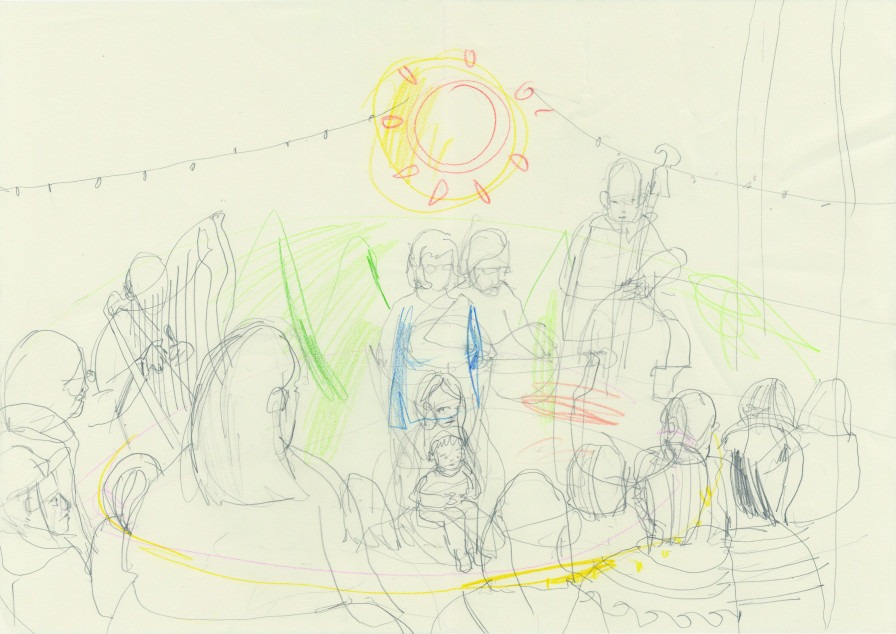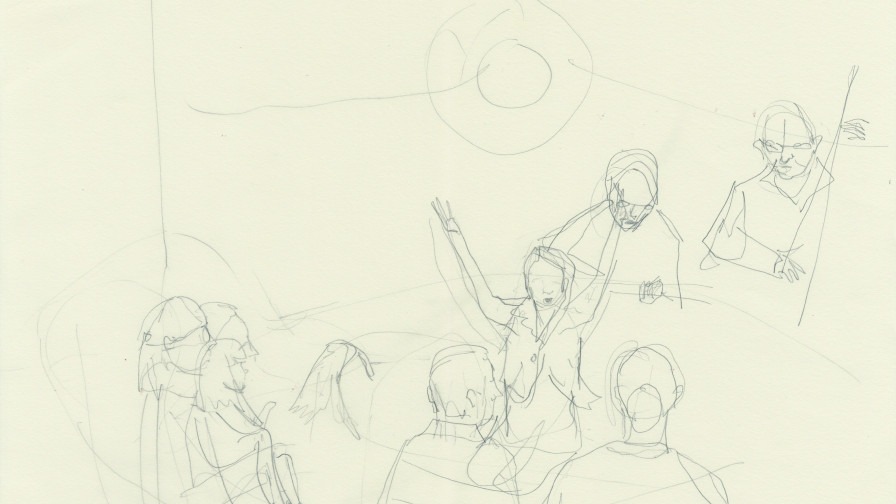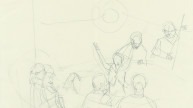Protecting Your Project from “Poverty Porn”.

Very young children cannot approve use of their image. How can we be certain we are using their image respectfully and for the right reasons?
A typical Early Years case study features pictures of a child or group of very young children who, despite poverty, illness, disability or misfortune, are helped through music. During active music-making the young child is happy, engaged and positively transformed but is clearly “in need” or they would not have qualified for the musical intervention.
I have worked with groups of children where photographic consent was denied by one or two carers so conscientiously avoided capturing “the boy in the orange shirt”. More worryingly, I have heard of projects where children are excluded from sessions where the photographer is present because consent for obtaining and sharing their photograph was not forthcoming. These examples show how we risk putting future funding possibilities or evaluation and publicity requirements ahead of young and vulnerable children’s active music-making.
Taken to its extreme, we are at risk of using a type of “poverty porn” (1) to justify the value of our work. We are also at risk of avoiding working musical magic with the most vulnerable children because we cannot celebrate or share this work in photographic form. Funders feed on photographs.
A remarkable solution?
With these thoughts in mind, when Sound Seeds (The Music Works) invited both mainstream and vulnerable families to a mass “Spring Sing” in Stroud we wanted to celebrate and share the learning yet knew that collecting permission for photography from fifty diverse families was not practical. Ceilidh-Jo Rowe came up with an idea inspired by the work of Court Artists. She asked a local artist (2) to sketch the feeling, shape and sense of the music sessions.
We don’t see recognisable faces but we see movement, shape, colour and involvement. On leaving the family singing event, children evaluated the show with a “thumbs up, sideways or down”. We gathered 100% thumbs up.
The artist’s sketches were a work-around of a difficult problem. They helped us capture the passion of the event where equality of opportunity and accessibility was paramount. We sent out targeted invitations, made tickets available locally and online, had clear disabled access, used signed songs throughout, employed low-level, slowly-changing lighting, acoustic instruments, and we furnished the space thoughtfully to cocoon families and make them feel welcome. Each child took home a home-made, green card “Spring Sing Leaf” and we have received photos of these leaves in children’s homes, serving a memento of a wonderful musical experience. What a turnaround. We were sent unsolicited photographs, having asked for none!
Working with vulnerable families prior to the Spring Sing was essential and Youth Music funding made this possible. Having missed out on mainstream music education due to illness or disability, but having attended previous projects, the vulnerable children present already knew the words and actions of the songs. For once in their lives they were the “experts”.
I hope other project leaders, who feel that the use of children’s images is questionable in their project, might be more creative in representing children’s successes. Like in our Spring Sing which was attached to our “Move, Groove, Improve” project, you might consider employing a local artist to gather images, and so much more, through their painted or pencilled images.
(1) A 2017 Guardian article referred to the use of images of poverty-stricken children to drive income to charities and Jorgen Lissner’s term “poverty porn “ https://www.theguardian.com/commentisfree/2017/dec/05/ed-sheeran-poverty...
(2) Our thanks to Rosalie Darien-Jones, artist based in Stroud, Gloucestershire


